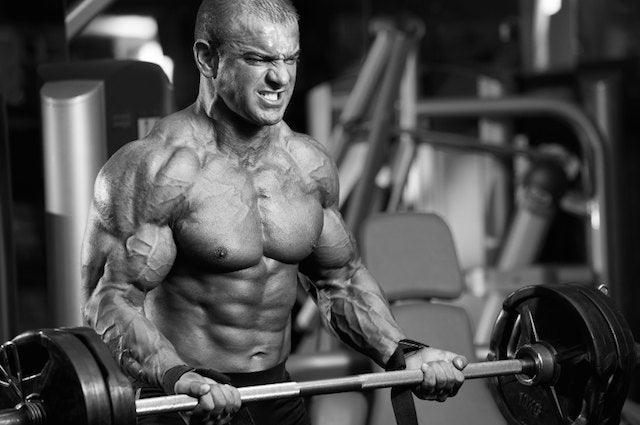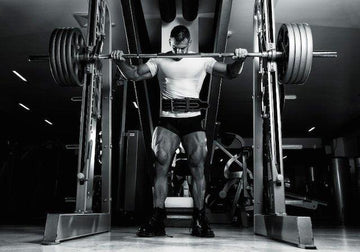

Combining Power and Explosive Exercises Results in Greater Muscle Mass
Table of Contents
Combining Power and Explosive Exercises Results in Greater Muscle Mass
by: Robbie Durand
If you are looking to take your muscle growth to the next level, then you need to try complex training. Most hardcore lifters know that a combination of strength and power exercises are necessary to optimal gains in strength and size.

A combination of strength training exercises performed on the same or different days has been found to result in decreases in type I and increases in type IIA muscle fibers. Basically, there is a shift in muscle fiber remodeling toward a more explosive, anaerobic fiber type. By combining two different types of training regimens, you’re recruiting both slow and fast twitch fibers that may be more conducive to muscle growth. Most lifters go to the gym and perform the most common type of training which is compound training.
Compound Training describes training with high resistances (70–90% 1 repetition maximum ) in 1 session and ballistic training or plyometric training with lower resistances (e.g. 30% 1RM or with body mass) on a different day. For example, you may do heavy squats on one day, and then on another day perform plyometric jumps and assorted explosive, ballistic exercises. This is often designed for a speed day training and power day training. Compound Training is an effective technique for those who are trying to maximize muscle mass.

Complex Training describes pairing similar exercises with the intent of enhancing muscle power output in the second exercise. For example, squat followed by an explosive squat jump. Mainly, complexes combine explosive plyometric training with strength training to produce a thoroughly challenging workout. Another example would be bench press, followed immediately by Plyo-Push Ups.
However, little is known about the superiority of either compound or complex for the development of power and muscle growth. To compare the effectiveness of compound and complex training programs, researchers had young males participate in 6 weeks of either compound or complex resistance training with an equal number of sets and repetitions. Both complex and compound based training programs, muscular strength was evaluated in all of the three exercises used for training (leg press, bench press, Smith machine box squat).
The researchers assigned athletes to 1 of 3 groups:
-Compound training: The compound group performed slow-speed, high- load (i.e., strength) and high-speed, low-load (power) training on alternate days.
-Complex training, whereas the complex group, performed strength- and power-based sets in the same session in pairs, that is, one strength exercise set followed by one power-based exercise set.
-and control group
Training was performed three times per week for six weeks. Exercises included the incline leg press, bench press, and box squat in a Smith machine, always performed in this order.
Power and Strength

At the end of the study, the group that used compound training (i.e., strength and power training carried out on opposite days) resulted in greater explosive performance. Jumping and throwing performance increased only with compound training. For muscular strength, complex training (i.e. strength training performed on the same day as explosive training) resulted in greater performance.
Strength Gains: Compound Training Complex Training
Bench press 5% vs. 18%
Leg press 17% vs. 28%
Smith machine box squat 27% vs. 35%
Muscle Growth
Muscle size of the leg muscle fibers was selectively increased only after complex training, which is in concert with the greater percentage increase in squat strength in this group. These results suggest that complex training led to a higher fiber hypertrophy than compound training relative to the training volume performed. These findings suggest that short-term strength and power training on alternate days is more useful for enhancing lower-limb and whole-body power, whereas training on the same day may induce greater increases in strength and fiber hypertrophy.
So the take home message, if you’re looking to get bigger and stronger, you should combine both strength and power on the same day as your workout.
Stasinaki AN, Gloumis G, Spengos K, Blazevich AJ, Zaras N, Georgiadis G, Karampatsos G, Terzis G. Muscle Strength, Power, and Morphologic Adaptations After 6 Weeks of Compound vs. Complex Training in Healthy Men. J Strength Cond Res. 2015 Sep;29(9):2559-69.
Liu, Y, Schlumberger, A, Wirth, K, Schmidtbleicher, D, and Steinacker, J. Different effects on human skeletal myosin heavy chain isoform expression: Strength vs. combination training. J Appl Physiol (1985) 94: 2282–2288, 2003.
Perez-Gomez, J, Olmedillas, H, Delgado-Guerra, S, Royo, IA, Vicente-Rodriguez, G, Ortiz, RA, Chavarren, J, and Calbet, JA. Effects of weight lifting training combined with plyometric exercises on physical fitness, body composition, and knee extension velocity during kicking in football. Appl Physiol Nutr Metab 33: 501–510, 2008.
MUSCLE MEDIA MAGAZINE FOR MEN
The premier source of training, nutrition, supplements, fat loss and health for men.

















